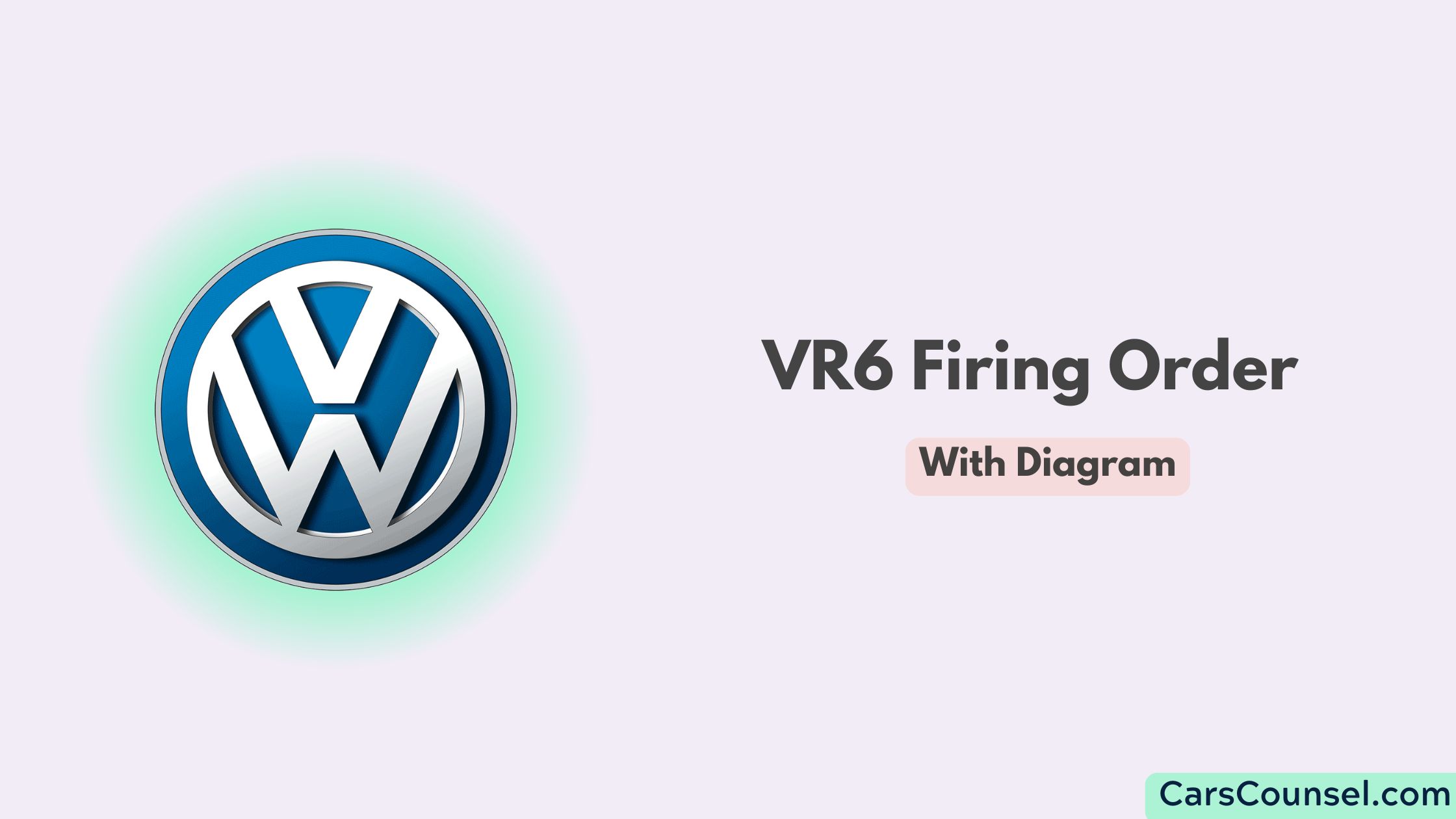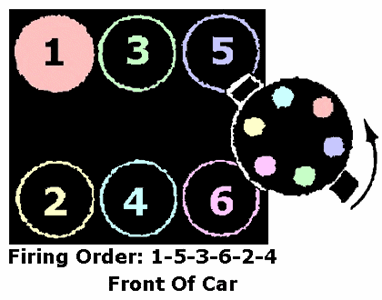The VR6 engine is known for its unique design, blending the compactness of an inline engine with the performance of a V-engine. Understanding the VR6 firing order is essential for proper maintenance, troubleshooting, and maximizing performance.
This guide provides a detailed explanation of the firing order and its critical aspects, presented in a conversational yet concise manner.

Quick Navigation
VR6 Firing Order
The firing order for a VR6 engine is 1-5-3-6-2-4. This sequence applies to both 12-valve and 24-valve versions of the VR6.

- Cylinder 1 fires first.
- Cylinder 5 follows.
- Cylinder 3 continues the sequence.
- Cylinder 6, 2, and 4 fire in succession.
This firing order ensures balanced power delivery and minimizes vibration.
What is the Firing Order?
The firing order refers to the sequence in which an engine’s cylinders fire. This sequence ensures the ignition of the fuel-air mixture in the correct order, maintaining smooth operation.
- Order defines the firing sequence of cylinders.
- Sequence balances power delivery.
- Process ensures efficiency and engine longevity.
For the VR6, this unique engine layout requires a specific firing order tailored to its design.
VR6 Engine Overview
The VR6 engine, developed by Volkswagen, features a narrow-angle V configuration with six cylinders. Its design allows for a compact, powerful engine suitable for both performance and everyday vehicles.
- Engine type: Narrow-angle V6.
- Cylinder count: Six.
- Bank angle: 15 degrees (approximate).
- Firing mechanism: Distributor or coil-on-plug system.
This configuration places all cylinders under a single cylinder head, requiring precise firing synchronization.
Cylinder Numbering in the VR6
Understanding the cylinder numbering is key to identifying the firing order. The VR6 engine cylinders are numbered based on their position.
- Front row (cylinders 1, 3, 5):
- Closest to the timing chain.
- Left bank (viewed from the front of the car).
- Rear row (cylinders 2, 4, 6):
- Right bank.
The numbering begins with Cylinder 1 at the front of the engine on the left and alternates between banks as it progresses.
Why the Firing Order Matters
The firing order directly affects engine performance and reliability. Proper sequencing ensures:
- Balanced operation: Prevents excessive stress on components.
- Efficient combustion: Maximizes fuel-air ignition.
- Smooth performance: Reduces engine vibration.
- Prolonged lifespan: Minimizes wear and tear.
For the VR6, the firing order supports its compact design and high-performance capabilities.
Symptoms of Firing Order Issues
Disruption in the firing order leads to noticeable symptoms, affecting engine performance. Common indicators include:
- Engine misfires during operation.
- Power loss or uneven acceleration.
- Excessive vibration or rough idling.
- Reduced fuel efficiency.
- Irregular exhaust noise or backfiring.
These symptoms often point to problems with ignition components or timing.
Diagnosing Firing Order Problems
Identifying firing order issues involves systematic inspection and diagnosis. Key steps include:
Inspect spark plugs:
- Check for fouling or damage.
- Replace worn plugs.
Verify ignition wiring:
- Confirm proper wire connections.
- Inspect for damage or wear.
Check the ignition coil:
- Test for proper function.
- Replace faulty coils.
Examine the timing system:
- Verify the timing chain and tensioners.
- Align timing components correctly.
Use diagnostic tools:
- Employ an OBD-II scanner to identify misfire codes.
- Perform a compression test to evaluate cylinder health.
Fixing Firing Order Problems
Once you identify the root cause, fixing firing order issues requires targeted action. Common solutions include:
Replace spark plugs:
- Install new, high-quality plugs that meet VR6 specifications.
Reorganize ignition wiring:
- Follow the 1-5-3-6-2-4 firing order when reconnecting wires.
Repair or replace ignition coils:
- Address malfunctioning coils to restore proper firing.
Realign timing components:
- Reset the timing chain or adjust the tensioner if necessary.
Reprogram the ECU:
- Update or reset the engine control unit to ensure correct timing signals.
Each repair ensures the VR6 engine fires in the proper sequence, restoring smooth performance.
Maintaining the VR6 Firing Order
Routine maintenance prevents ignition system issues and ensures the firing order remains intact. Key practices include:
Inspect ignition components regularly:
- Check spark plugs, wires, and coils for wear.
Follow service schedules:
- Replace timing chain and tensioner components as recommended.
Keep connections clean:
- Remove debris or corrosion from electrical terminals.
Monitor ECU performance:
- Update software or address sensor faults as needed.
Consistent maintenance prolongs engine life and keeps the VR6 running smoothly.
VR6 Firing Order FAQs
Can the firing order change?
No, the firing order is fixed by the engine design and cannot be altered without significant modifications.
What happens if the firing order is incorrect?
An incorrect firing order causes misfires, reduced performance, and potential engine damage.
How do I verify the firing order?
Refer to the service manual or distributor markings. Ensure wires follow the 1-5-3-6-2-4 sequence.
Does the firing order affect fuel efficiency?
Yes, the correct firing order ensures efficient combustion, improving fuel economy.
Can I fix firing order problems myself?
Yes, basic tasks like replacing spark plugs or wiring can be done at home. For complex issues, consult a professional mechanic.
Conclusion
The VR6 firing order, 1-5-3-6-2-4, is essential for its smooth performance and reliability. Understanding this sequence helps in troubleshooting issues, performing maintenance, and optimizing engine functionality. By addressing ignition problems promptly and following regular service schedules, you can ensure your VR6 engine delivers consistent power and remains a reliable performer for years to come.

